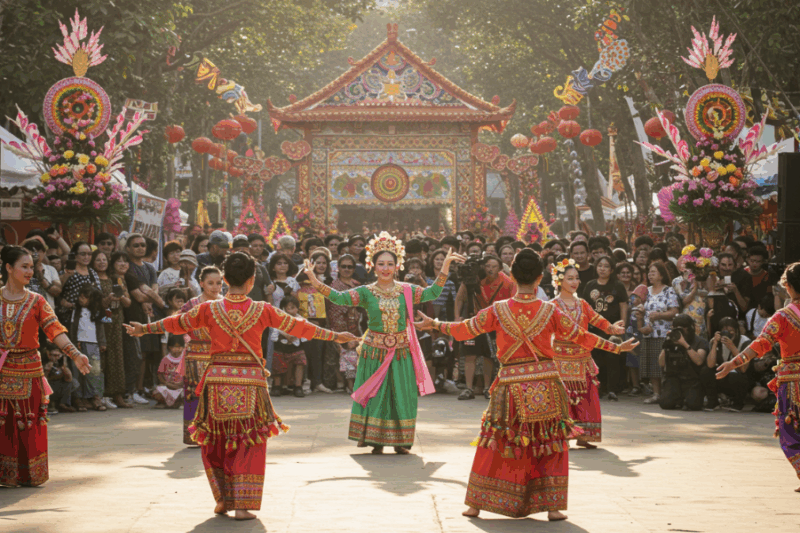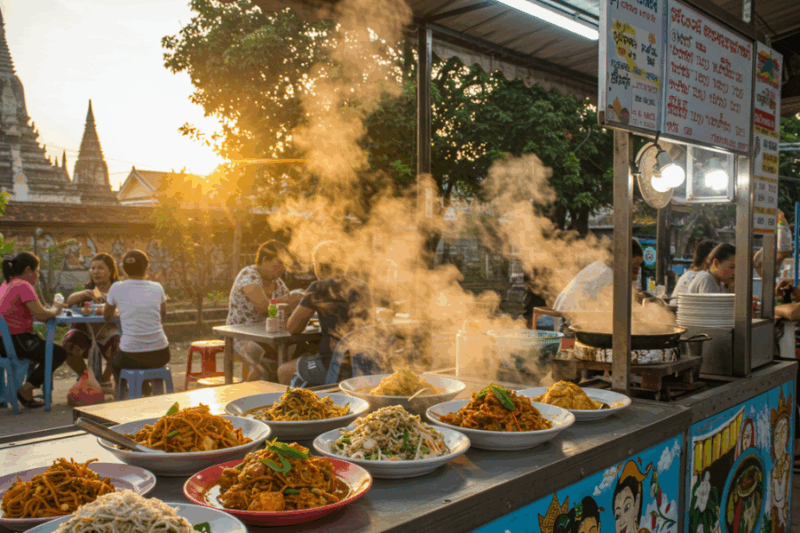Japan’s rich culture, rooted in tradition and respect, captivates travelers with its blend of ancient customs and modern innovation. Understanding cultural etiquette is essential to ensure a respectful and enjoyable visit. This guide outlines key practices to follow when visiting Japan in 2025, helping you navigate social norms with confidence.

Respect for Politeness and Harmony
Japanese culture emphasizes wa (harmony) and mutual respect. Politeness shapes interactions, even in casual settings:
- Greetings: Bow slightly when meeting someone, keeping hands at your sides. A nod suffices for informal encounters. Address people using their last name followed by “-san” (e.g., Tanaka-san) unless invited to use first names.
- Punctuality: Arrive on time for appointments, tours, or reservations. Trains and events run precisely, so plan ahead to avoid rushing.
- Quiet Behavior: Keep noise low in public spaces like trains, buses, or restaurants. Use headphones for music and speak softly on phone calls, ideally in designated areas.
Personal Space and Physical Contact
Japan values personal space, and physical contact is minimal:
- Avoid Touching: Refrain from hugs, pats, or handshakes unless initiated. Bowing is the standard greeting.
- Queue Orderly: Line up neatly for trains, buses, or attractions. Cutting in line is considered rude.
- Public Displays of Affection: Keep romantic gestures like kissing or holding hands discreet, especially in rural areas.
Dining Etiquette
Japanese cuisine is a highlight, but dining customs are specific:
- Chopstick Rules: Don’t stick chopsticks upright in rice (it resembles a funeral ritual) or pass food directly between chopsticks. Use the provided rest for chopsticks when not eating.
- Slurping: Slurping noodles (e.g., ramen or soba) is acceptable and shows appreciation. Finish your bowl to honor the chef.
- Saying Grace: Before eating, say “itadakimasu” (I humbly receive) to express gratitude. After, say “gochisousama” (thank you for the meal).
- Paying the Bill: Splitting bills is uncommon. One person typically pays, or use apps like PayPay for group meals. At counters, place money in the provided tray, not directly in the server’s hand.
- Tipping: Tipping is not customary and can be seen as insulting. Exceptional service is included in the price.
Visiting Temples and Shrines
Japan’s Shinto shrines and Buddhist temples are sacred spaces requiring respect:
- Dress Modestly: Cover shoulders and knees. Remove hats before entering worship areas.
- Purification Ritual: At shrine entrances, rinse your hands and mouth at the temizuya (water basin). Use the ladle to pour water over your left hand, then right, and sip from your cupped hand (don’t touch the ladle to your mouth).
- Prayer Etiquette: At Shinto shrines, bow twice, clap twice, pray silently, and bow once. At Buddhist temples, bow once and place hands together without clapping. Don’t take photos of altars or during rituals.
- Remove Shoes: Slip off shoes before entering temple halls or tatami rooms. Wear clean socks, as bare feet may be frowned upon.
Public Bathing (Onsen and Sento)
Hot springs (onsen) and public baths (sento) are cultural experiences with strict rules:
- Nudity: Bathing is nude, separated by gender. Cover private areas with a small towel outside the water, but don’t dip it in the bath.
- Clean First: Shower thoroughly at the washing stations before entering the communal bath. Soap residue in the water is disrespectful.
- Tattoos: Some facilities ban tattoos due to historical associations with organized crime. Check for tattoo-friendly onsen or cover small tattoos with waterproof patches.
- Silence: Keep conversations quiet to maintain the serene atmosphere.
Public Transport Etiquette
Japan’s efficient trains and buses have specific norms:
- No Phone Calls: Talking on phones is prohibited on trains. Set devices to silent mode and text instead.
- Priority Seats: Reserve these for elderly, pregnant, or disabled passengers. Avoid using them during peak hours.
- Boarding: Line up at marked platform spots and let passengers exit before boarding. Push politely during rush hour in cities like Tokyo.
- Eating: Avoid eating or drinking on short train rides. It’s acceptable on long-distance shinkansen (bullet trains) if discreet.
Gift-Giving and Souvenirs
Gift-giving (omiyage) is a cherished custom:
- Presentation: Gifts, even small souvenirs, should be wrapped neatly. Hand them over with both hands and a slight bow.
- Reciprocity: If given a gift, consider reciprocating later. Local sweets or crafts from your destination are ideal.
- Refusal: If offered something, decline politely once before accepting to show humility.
Language and Communication
While English is increasingly common in tourist areas, learning basic Japanese enhances interactions:
- Key Phrases: Learn “konnichiwa” (hello), “arigatou” (thank you), “sumimasen” (excuse me/sorry), and “onegaishimasu” (please). Apps like Duolingo or LingoDeer are helpful.
- Non-Verbal Cues: Japanese communication is indirect. Avoid confrontational tones and read body language for cues.
- Pointing: Pointing at people is rude. Gesture with an open hand instead.
General Do’s and Don’ts
- Do Remove Shoes: Always remove shoes when entering homes, traditional accommodations (ryokan), or certain restaurants. Slippers are often provided.
- Don’t Blow Your Nose in Public: Use a restroom or private space. Carry tissues for allergies.
- Do Carry Cash: Many small shops and rural areas prefer cash (yen). ATMs at 7-Eleven or Japan Post are reliable for withdrawals.
- Don’t Walk and Eat: Eating while walking is frowned upon, except at festivals. Sit or stand in place to eat street food.
- Do Respect Queues: Whether at convenience stores or attractions, wait your turn patiently.
Safety and Practical Tips
- Safety: Japan is very safe, but stay aware in crowded areas like Shibuya Crossing. Keep valuables secure in hostels or hotels.
- Lost Items: If you lose something, check with koban (police boxes) or station lost-and-found. Japan’s return rate is high.
- Connectivity: Get a prepaid SIM card (e.g., Mobal) or pocket Wi-Fi for navigation. Google Translate’s camera feature helps with signs or menus.
- Health: Tap water is safe. Carry a small first-aid kit and travel insurance for emergencies.
Why Etiquette Matters in Japan
Respecting Japanese customs shows appreciation for the culture and fosters positive interactions. Locals are forgiving of minor mistakes by foreigners, but effort goes a long way. In 2025, Japan’s tourism continues to grow, with cities like Osaka hosting global events, making cultural sensitivity even more important.
Final Thoughts
Japan’s blend of tradition and modernity is best experienced with an open mind and respectful attitude. By following these etiquette tips, you’ll navigate social situations smoothly, from bowing in Kyoto’s temples to dining in Tokyo’s izakayas. Learn a few phrases, observe local behavior, and embrace the culture to make your visit unforgettable. Japan’s warmth and hospitality await—enjoy the journey with grace.



